QR Codes and the Rise of Mobile Marketing
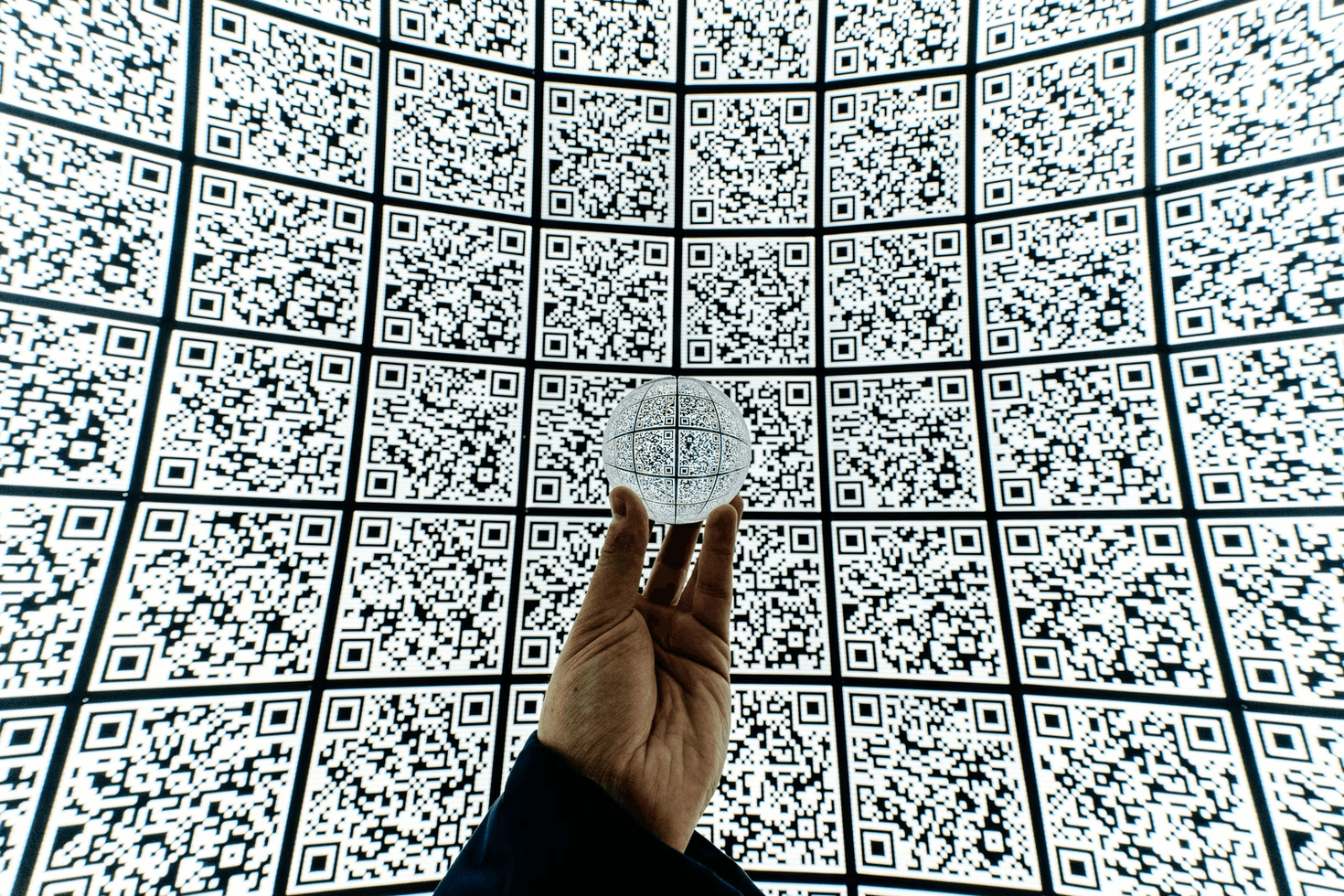
Table of Contents
QR codes were first utilised in 1994 by Toyota to support supply chain management in their plants. They have had quite a journey since! This article outlines that journey and explores their use right now.
A brief history of QR codes
After Toyota, other car manufacturers followed suit. QR codes helped to ensure that the thousands of parts involved in a car’s manufacture were available in the right place and at the right time. They could carry far more information than traditional, linear barcodes.
With the rise of smartphones during the 2000s, marketers saw new opportunities for QR codes. If you had a smartphone, you had a device that could, in theory, scan them. Thus they could move out of the factory and into more general use.
For a while, they were all the rage, and many businesses put them to use. Yet their impact by the second half of the 2010s had been underwhelming. Indeed, they seemed destined to be quietly sidelined.
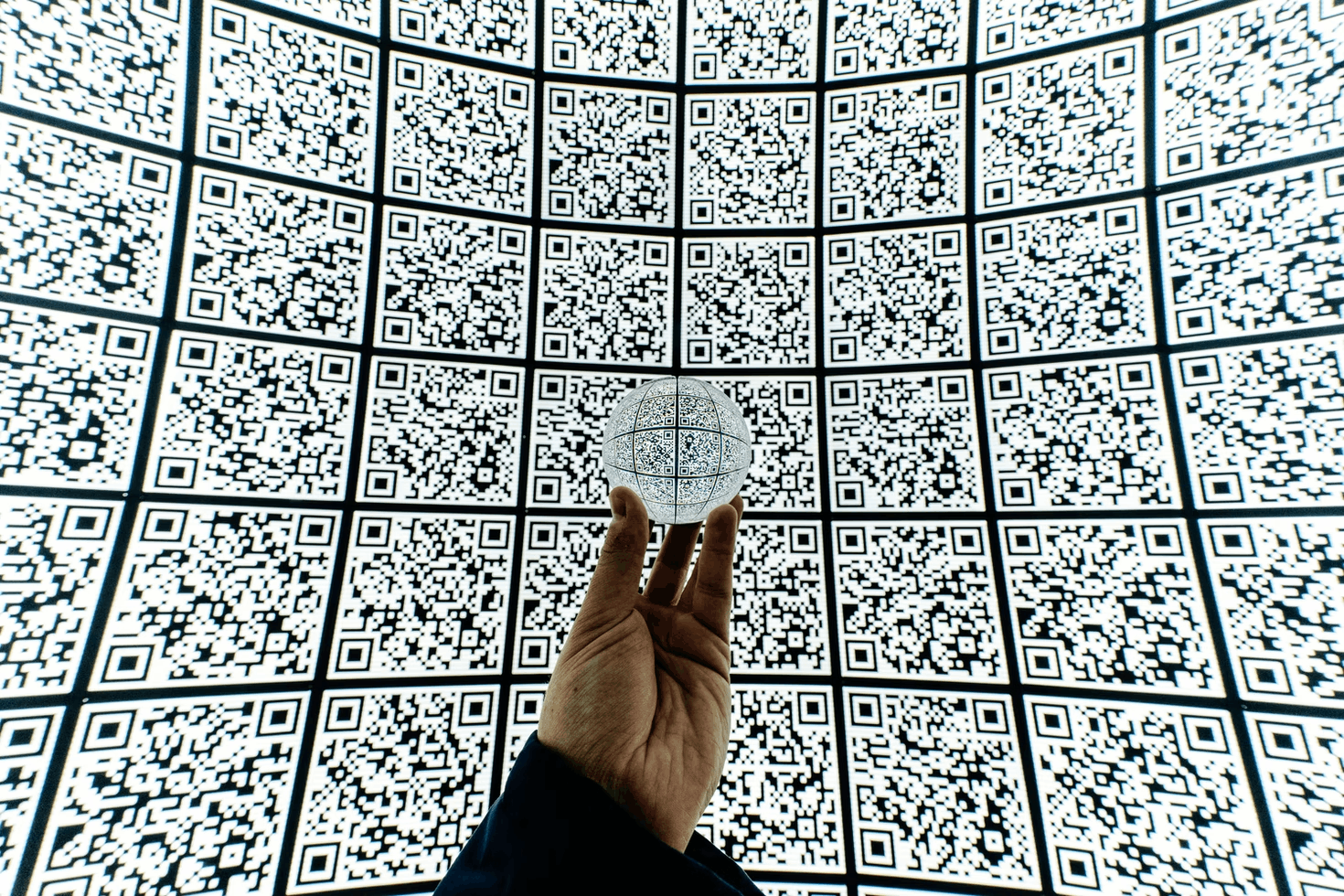
So what went wrong?
A few factors probably explain their low impact during the 2010s:
- Low awareness: Most consumers didn’t know about QR codes or understand their value.
- Impractical: To use QR codes, smartphone users first had to download a scanning app, which they needed to open every time they wanted to scan a code. The whole process felt a bit clumsy.
- Poor positioning: Often, they were impractically placed, e.g. the back of a moving bus!
- Poor experience: Once scanned, the value-for-effort payback was often disappointing. Many codes took users to static, text-heavy web pages.
- Limited tracking: Marketing capabilities for customer tracking were nascent, limiting the value businesses could squeeze from using QR codes.
QR codes weren’t cutting through. They were seen as a complication, a gimmick, or even a joke: a lot of hard work for an advert.
Yet, despite that…
While marketing faith in them declined, QR codes did not go away. Many businesses still used them.
Moreover, in the meantime, other technological, social, and marketing trends were perhaps boosting their potential:
- In 2017, Apple integrated the QR reader into the iPhone. As the 2010s drew to an end, QR readers were becoming a native feature of most smartphones. This removed the need to download additional apps to scan codes.
- Smartphones were rapidly becoming indispensable for most people. Usage was more frequent and more varied.
- Digital marketing generally was more effective, more innovative, and more data-driven. Support for customer journeys in a digital world improved.
- Omnichannel marketing, and how to support the customer experience when moving between different channels, took on new importance.
And, after all, there had been some massively successful and innovative examples of QR code use in marketing in the early days. A prime example is Tesco’s use of them in South Korean underground stations: waiting time became shopping time.
QR codes themselves also improved. Dynamic QR codes were gaining traction. These offered more flexibility and value (for example, destination links were editable and could be used to track customer data). Improved approaches to QR code design helped them look less alien on products and marketing.
Perhaps they merely needed an opportunity to transform from gimmicky loser to marketing marvel.
Then Covid changed everything
With touch now carrying a danger of transmission, the Covid pandemic necessitated contactless technology. Step forward, QR codes!
Their instant and accessible nature allowed them to shine. With a QR code and a smartphone, most people could access what they needed, when they needed it. They were the right tool, at the right time.
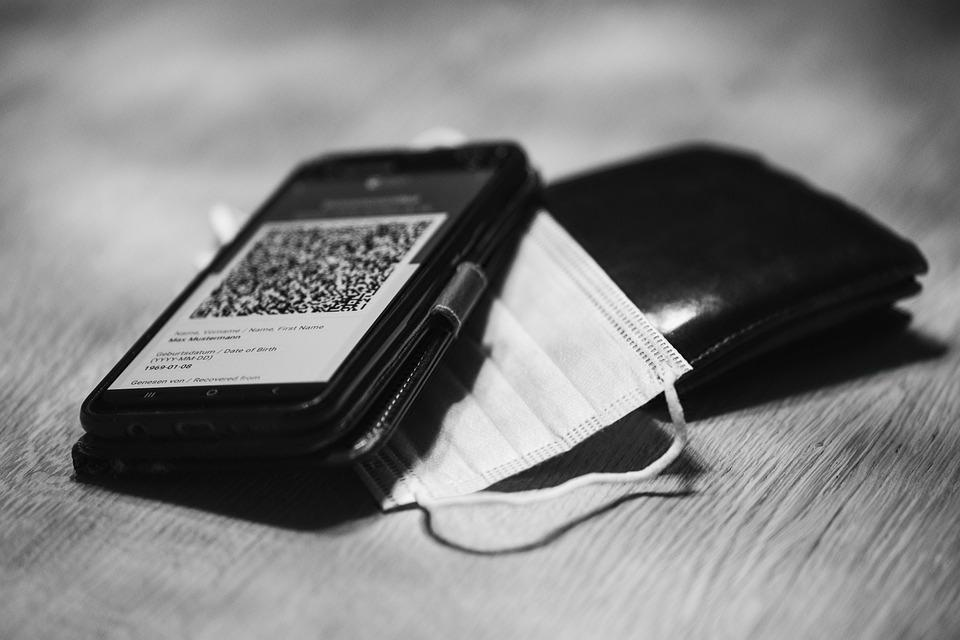
During the pandemic, they rapidly became ubiquitous in our lives. They solved problems that didn’t exist before.
- Touchless payments: payments could be made without cards or cash being handled.
- Touchless tickets: no physical, paper tickets were needed.
- Checking-in: they provided an organizational tool for mass vaccination programs.
- Vaccination passes: facilitated tracking of people’s vaccination status. In some countries, they were critical in track and trace programs.
- Menus: supported social distancing by enabling online at-table ordering.
As with call conferencing and video calls, Covid meant that QR codes became a more accepted part of our lives.
Their use shot up. To illustrate this, in 2019, 52 million US smartphone users had used their QR code scanner, but by 2021 this had increased to 75 million (a 44% increase in two years).
QR codes are big
Some Covid-related changes have shifted longer-term behavior. Certainly, QR code use is still much higher than before the pandemic.
Whether in retail or medical settings, restaurants, banks, or on products, usage is significantly higher than before the pandemic. Some employers use QR codes in the workplace to promote benefits; for example, training, wellbeing support, gym or medical perks, or even to promote outplacement schemes.
A 2021 survey found that 45% of US respondents had used a marketing-related QR code within three months of the survey. And this increase looks set to continue.
They are used more but are also more accepted. A 2021 survey found that 59% of respondents believed they would become a permanent part of their smartphone use. Written off as a gimmick a few years before, this is quite a turnaround.
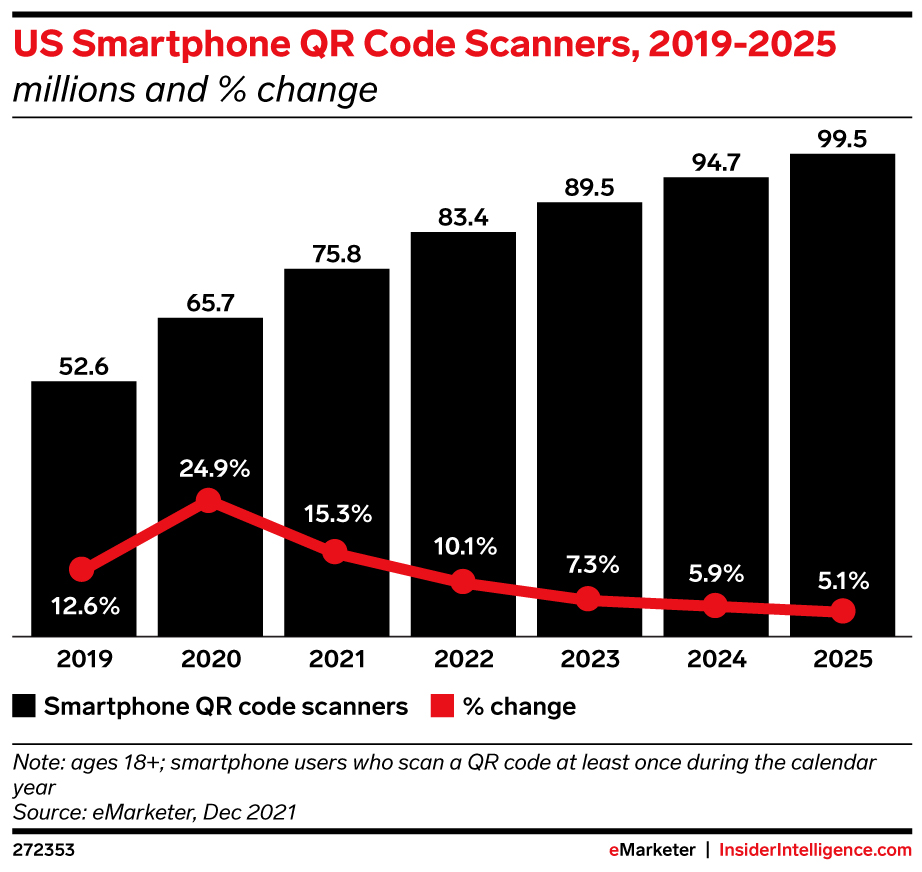
The main features of current QR code marketing
QR codes are being used more widely, more innovatively, and more coherently for the customer.
Dynamic QR codes are being used rather than static to facilitate greater versatility. Placement is more strategic to make the customer want to scan them. And better design means they look less alien.
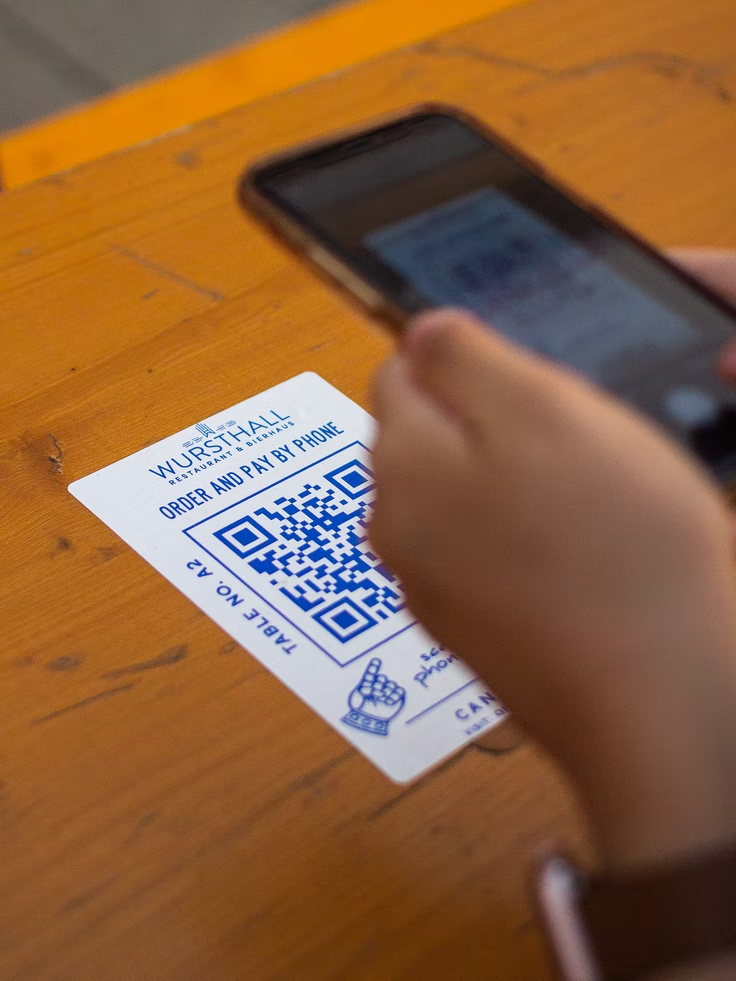
They’re still used widely for payments, ordering, tickets, and so on. And they’re also used for marketing on products, billboards, magazine adverts, and newspapers, as well as in shops, restaurants, and many other settings. In particular:
- They are often linked to specific events or experiences, generating buzz and driving engagement. Thus, they appear in games, TV adverts, and art installations.
- They promote specific, targeted promotions to increase engagement.
- They support up-selling and cross-selling, e.g. ‘If you like our peanut butter, you’re sure to love our almond butter too! Scan for info.’
- As part of an affiliate marketing business plan, QR codes can be used to collect customer contact details in order to then nurture their interest with bespoke emails or other communication.
- They can help to collect customer views and feedback, e.g. QR code links to surveys.
With every step of a customer’s journey needing to offer benefit or value, the way they’re used has sharpened:
- They’re framed with very clear and concise customer CTAs (e.g. ‘Scan to pay’, ‘Scan to view menu’). They’re benefit-led.
- Scanning leads to very specific (often bespoke) landing pages, linked to the CTA and promised benefits (not generic homepages).
- The content is of higher quality. Video or other dynamic content boosts engagement.
- Destination content now provides an optimal mobile experience.
- They foster brand engagement via social media, e.g. ‘Follow us on Instagram’ type CTAs.
- Tools such as Amazon sagemaker instance types harness customer data and machine learning to drive more personalised QR code experiences for users. For example, scanning a product QR code might take each customer to further relevant products, filtered based on their own customer profile and previous preferences.
As a well considered element of a broader marketing strategy, they can contribute coherently to an overall omnichannel customer experience, creating buzz and boosting awareness.
Looking to the future
QR codes are back in vogue. They bridge the gap between the offline and the online worlds in a relatively environmentally friendly way. No other resource is needed: they’re easy and instant. Previously deemed an unnecessary distraction, their potential to enhance customer experience is now broadly recognized.
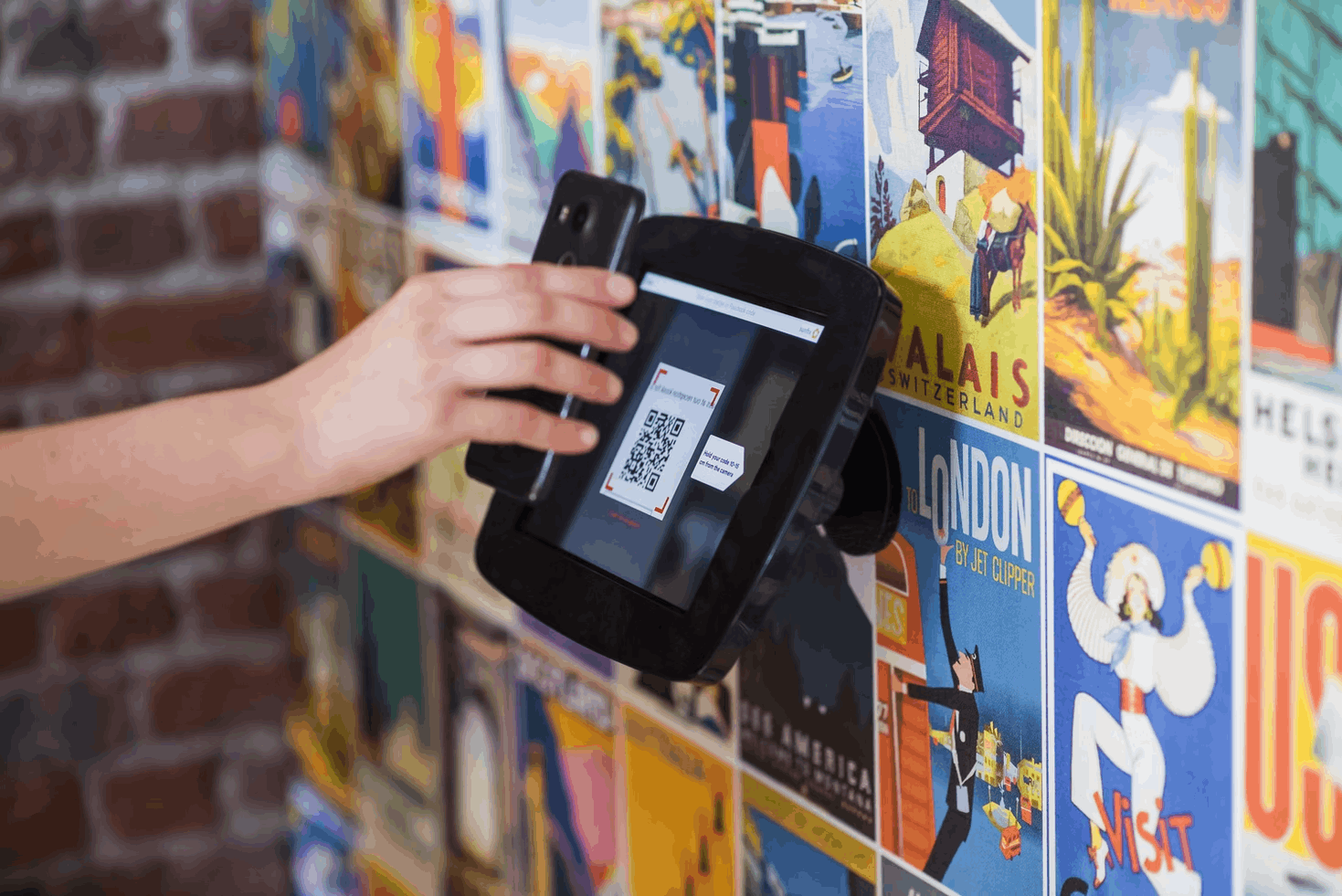
Other trends, such as automation and personalization, will continue to inform their use, as will marketing data-tracking which is becoming ubiquitous, from workforce optimization with Dialpad and others, to omnichannel customer tracking. These trends open up new opportunities for how QR codes might be employed and the advantages they might offer businesses.
Who knows what the future might hold. Popular alternatives may well evolve. After all, technological change and evolution are the only constant these days: look at the Otter alternatives now available for automated note-taking, for example.
But, for now, they appear to be the right tool, at the right time.

Grace Lau
Director of Growth Content, Dialpad
Grace Lau is the Director of Growth Content at Dialpad, a cloud communication platform powered by AI technology that includes sales coaching functionality for better and easier team collaboration. She has over 10 years of experience in content writing and strategy. Currently, she is responsible for leading branded and editorial content strategies, partnering with SEO and Ops teams to build and nurture content. She has written for domains like eClincher and Mirasee. You can connect with her on LinkedIn